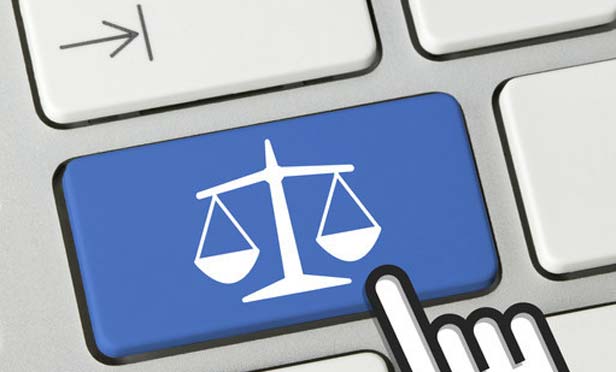As legal technology continues to advance and evolve, trials and depositions bear little resemblance to the paper-centric proceedings they used to be in decades past. The days when litigation meant being buried in boxes and boxes of documents and exhibits are long gone.
From virtual proceedings and paperless depositions to real-time technologies and mobile capabilities, technology has become an integral part of practicing law today. If you want to get the most out of your next deposition or trial, you need to be familiar with the top technologies that are changing the game in 2020.
1. Paperless Exhibits
Trials and depositions are no longer feats of physical labor that require hauling around mountains of documents. Many proceedings are going paperless with the help of apps that you can use to introduce and share exhibits with a few clicks or taps. Exhibits can be preloaded so you can still decide mid-proceeding what you want to use and when, and there’s no more guessing how many copies you might need of everything. With one click, your next piece of evidence is stamped and securely distributed to the other parties.
Paperless exhibits facilitate the use of PDFs as well as any other native file type. From video and audio to CAD and other proprietary file types, other participants receive copies on their own devices as you introduce them, and a full set of electronic copies is delivered to everyone, including the court reporter, at the end of the proceeding with the final transcript. What used to require piles of boxes now just involves a laptop or tablet.
2. Virtual Depositions
It’s not only the paper files that no longer have to be at the deposition table—neither do all the participants. While it would be great to be able to attend every single deposition in person, time and cost constraints often make it impossible or infeasible.
Today, virtual deposition tools allow for anyone to remotely participate in any deposition from anywhere in the world as long as there is a webcam and an internet connection. Virtual depositions allow you to observe witnesses and chat with other participants, even when you can’t be there in person. It’s the next best alternative when it’s not feasible to have your whole team (or anyone) physically there.
3. Real-Time Transcripts
Transcripts play a crucial role in any case, and in large part the procedures of every deposition are designed to produce a clear, accurate transcript. Creating those transcripts takes time, though, and time may not be something you have with your case. Of course, you have the option to order a rough transcript or expedite an order, but for the occasions you need text instantly, there is real-time transcription.
Today, a number of software solutions—some even free—allow you to see your transcript in real time, as it’s being recorded. This means you no longer need to wait to confirm what was said but can instead act on testimony as it comes out. Marking text, running searches and sharing excerpts with your team can all be done from your laptop and now even your mobile device. Real-time transcription can also be used in conjunction with virtual depositions, making sure you never miss a word.
4. Video
Reading a transcript into the record can never compare to actually seeing the deponent on video. With it becoming harder and harder to keep a jury’s attention, the use of video in trials has increased. Historically, to create clips of a video deposition was expensive and time-consuming, but video synchronization has changed all that.
The video of the deponent is now synchronized to the text of the deposition, which scrolls alongside them in real time. Creating a clip for trial is as easy as selecting the transcript text you need and clicking a button that says “Clip.” The software will automatically edit the corresponding section of the video for easy playback in trial. This is so fast that clips can even be created during cross-examination! We live in a visual world, and video can be a much more powerful tool for making your case than a written transcript alone.
5. Native Evidence Capture
As electronic evidence rapidly replaces paper, new file types constantly seem to be emerging. Today’s video technologies now allow you to display native electronic documents to witnesses during depositions and record the ways the witnesses review and manipulate that evidence in real time. The mouse movements, keystrokes, drop-downs, formulas and calculations they make are captured via picture-in-picture display, meaning the judge or jury will be able to see a witness working with the digital evidence. Used in conjunction with video synchronization, you can easily create trial-ready clips with just a few clicks of your mouse.
As your cases become more complex, with more complex evidence, being able to compellingly tell your story is even more critical. A picture-in-picture view of the witness and the native file facilitates a better understanding for a judge or jury.
6. Online Portal Tools
A key part of preparing for any deposition or trial is reviewing past deposition transcripts. Traditionally, finding the exact passage you needed in a pile of transcripts was an overly time-consuming endeavor. Now, online portal tools make it simple and, more importantly, fast.
A modern reporting agency will deliver all transcripts and exhibits electronically in an online depository that is also fully text-searchable. With built-in tools, you can search across all transcripts and exhibits by keyword, date range, party name, exhibit number or any other specific parameter to find exactly what you need without any additional software. With everything being hosted online, you can do all this from your computer or even the browser on your mobile phone.
7. Trial Presentation Tools
As juries continue to demand more compelling presentations, modern trials bear little resemblance to those of days past. Today’s trials are multimedia affairs. With the right presentation tools, today’s lawyer can run an entire trial from an iPad or other mobile device. Sophisticated software and mobile apps allow you to share exhibits, display deposition videos and transcripts and deliver visually compelling trial presentations without transporting mountains of files and equipment to the courthouse.
8. Mobile Tools & Tablets
Many of the technologies outlined above are made even more accessible through the use of tablets and other mobile tools. Today’s lawyer is a mobile one, and the ability to travel light while still accessing everything necessary to do the job is essential. Thanks to mobile apps, that’s possible.
Apps now exist to allow you to handle nearly every aspect of your practice from an iPad, including reviewing and marking up transcripts, annotating PDFs, scanning documents, introducing deposition exhibits, reading real-time transcripts, preparing and delivering trial presentations, distributing trial evidence and vetting potential jurors. Desktop computers, laptops and even photocopies can be replaced with a lightweight tablet, making the mobile lawyer just as functional as his office-bound counterpoint.
Join the Technological Revolution
If you’re still lugging around boxes of files or feeling tied to your office, it’s time to make some changes. What worked in the past can often be an impediment to efficiency in today’s technological world.
The tools outlined above should be a regular part of every modern litigator’s arsenal. From going paperless and mobile to mastering new apps and file types, incorporating the latest technologies into your depositions and trials will not only save you time and money; it will put you on the path to better outcomes for your clients.
Michael Murray is the Director of Client Solutions for Veritext Legal Solutions. Murray stays on top of litigation technology trends and travels throughout the nation speaking and providing informative and entertaining, CLE’s, educational instruction and product demonstrations to legal professionals.

















